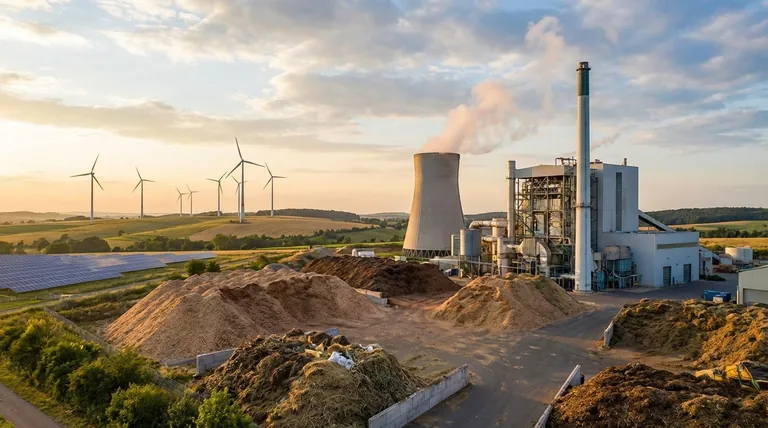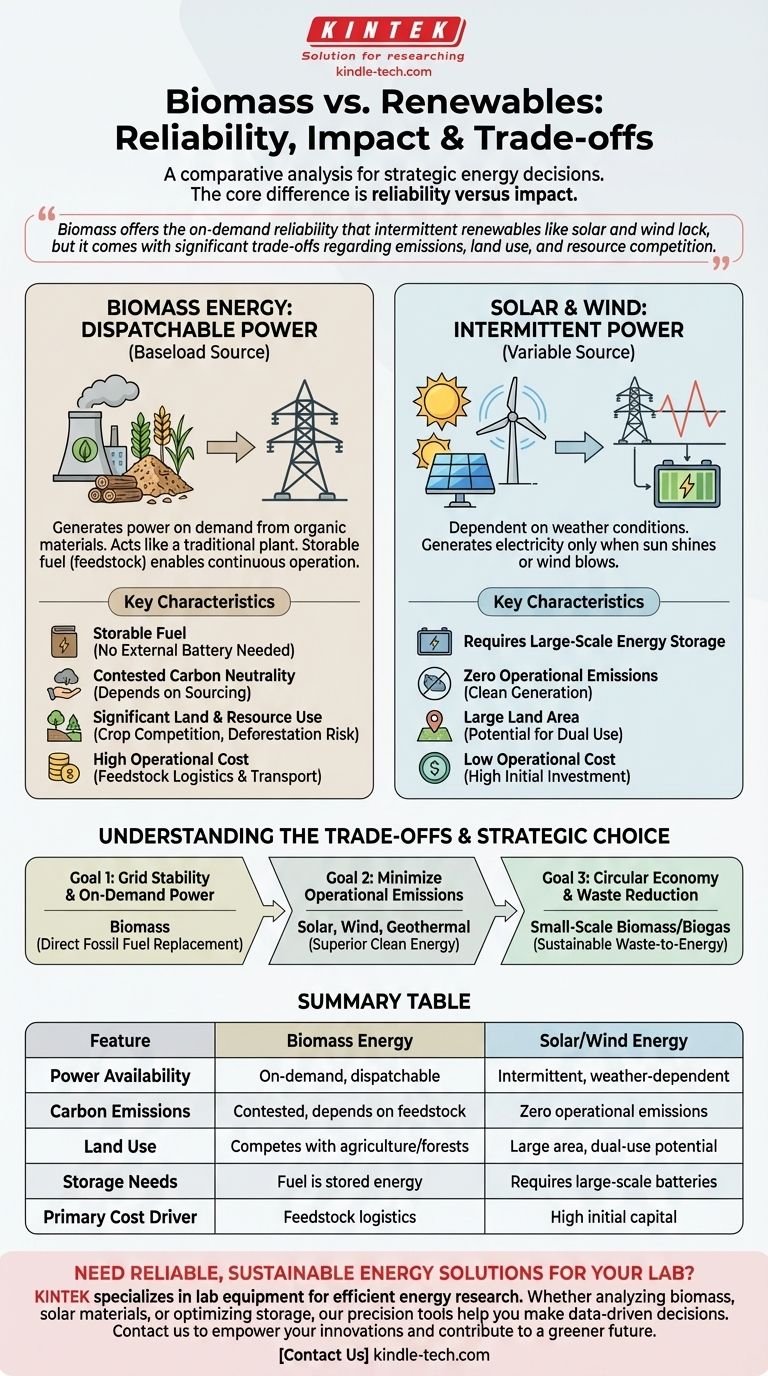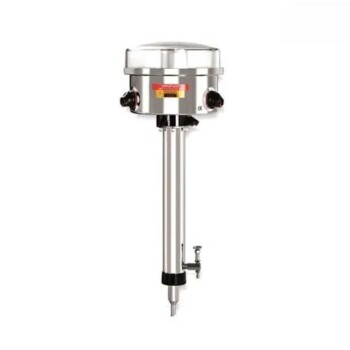Unlike intermittent renewables like solar and wind, biomass energy is generated from organic materials and can produce power on demand, acting much like a traditional fossil fuel plant. While sources like wood, crops, and waste provide a storable, dispatchable form of renewable energy, their environmental and logistical profile is fundamentally different from other green technologies. The sustainability of biomass is not a given; it depends entirely on how the feedstock is sourced, processed, and replenished.
The core difference is reliability versus impact. Biomass offers the on-demand reliability that intermittent renewables like solar and wind lack, but it comes with significant trade-offs regarding emissions, land use, and resource competition that are not present in other major renewable sources.

The Defining Characteristic: Dispatchable Power
Biomass holds a unique position in the renewable energy landscape because it is not dependent on immediate weather conditions. This allows it to serve a different function within an energy grid.
Biomass as a Baseload Power Source
Biomass power plants burn organic matter to create steam, which turns a turbine to generate electricity. Because the fuel (feedstock) can be stored, these plants can run continuously.
This makes biomass a source of dispatchable power, meaning its output can be controlled to meet demand. It can provide a steady, reliable "baseload" of electricity for the grid.
The Contrast with Intermittent Sources
Solar and wind power are intermittent. They only generate electricity when the sun is shining or the wind is blowing.
This variability creates challenges for grid stability, as supply does not always align with demand. Their operational profile is one of fluctuating peaks and troughs.
The Role of Energy Storage
To compensate for their intermittency, solar and wind increasingly rely on large-scale battery storage systems. This adds complexity and cost to a project.
Biomass does not require this external storage, as the energy is chemically stored in the organic material itself, making it a more direct replacement for coal or natural gas in terms of operational function.
Comparing Key Performance Metrics
When evaluating biomass against other renewables, the comparison extends across emissions, land use, and cost. There is no single "best" option; each has a distinct profile.
Land and Resource Use
Biomass can be resource-intensive, requiring significant land to grow energy crops. This can create competition with agriculture for food production or lead to deforestation if not managed sustainably.
Solar and wind farms also require large areas of land. However, this land can sometimes be used for other purposes simultaneously, such as grazing animals beneath wind turbines or on the unused land of a solar farm.
Hydropower has a massive land-use impact due to the creation of reservoirs, which flood entire ecosystems and displace communities.
Carbon Emissions Profile
While biomass is often labeled carbon neutral, this is a contested and complex claim. Burning biomass releases carbon dioxide into the atmosphere immediately.
The theory is that this carbon is reabsorbed as new plants grow to replace the harvested feedstock. However, this "carbon payback period" can take decades, meaning biomass can be a net contributor to atmospheric CO2 in the short and medium term.
In contrast, solar, wind, and hydropower produce zero operational emissions. Their carbon footprint is almost entirely confined to the manufacturing, transport, and construction phases.
Operational Cost and Efficiency
The cost of biomass energy is heavily tied to the price and logistics of its feedstock. Collecting, drying, and transporting organic matter is a constant operational expense.
Solar and wind have no fuel costs, and their operational and maintenance costs have been declining for years. Their primary cost is the initial capital investment. The conversion efficiency of biomass to electricity is also typically lower than other generation methods.
Understanding the Trade-offs
The "green" credentials of biomass are not absolute. They are conditional on sourcing and management practices, which introduces significant risks and complexities not found in other renewables.
The "Carbon Neutral" Debate
The most significant trade-off is the emissions profile. If biomass feedstock is sourced from dedicated, fast-growing crops on marginal land, or from waste streams that would otherwise decompose and release methane, its climate benefit is clearer.
However, if it relies on harvesting whole trees from mature forests, the net effect can be a long-term increase in atmospheric carbon compared to leaving the forest intact.
Feedstock Sourcing and Logistics
The supply chain for biomass is its Achilles' heel. Transporting heavy, low-density organic matter over long distances can negate much of the energy and carbon savings.
Unsustainable sourcing can drive deforestation, harm biodiversity, and impact soil health. This makes local, small-scale biomass projects that use genuine waste far more sustainable than large, industrial-scale plants that import wood pellets from overseas.
Scale and Geographic Limitations
While solar panels and wind turbines can be deployed in a vast range of environments, biomass is dependent on the local availability of suitable organic matter.
This makes it an excellent solution in regions with major forestry or agricultural industries that produce significant waste, but a poor choice for arid or urbanized areas.
Making the Right Choice for Your Goal
The decision to use biomass over other renewables is a strategic one that depends entirely on your primary objective.
- If your primary focus is grid stability and on-demand power: Biomass is one of the only renewable sources that can directly replace the baseload function of fossil fuels without requiring massive battery storage.
- If your primary focus is minimizing operational emissions: Solar, wind, and geothermal are vastly superior, as they produce no direct emissions during power generation.
- If your primary focus is a circular economy and waste reduction: Small-scale biomass or biogas projects that convert local agricultural, forestry, or municipal waste into energy are an excellent and highly sustainable choice.
Ultimately, understanding where biomass fits requires viewing it not as a universal solution, but as a specialized tool within a diversified renewable energy portfolio.
Summary Table:
| Feature | Biomass Energy | Solar/Wind Energy |
|---|---|---|
| Power Availability | On-demand, dispatchable | Intermittent (weather-dependent) |
| Carbon Emissions | Contested (depends on feedstock sourcing) | Zero operational emissions |
| Land Use | Can compete with agriculture/forests | Large area required, but potential for dual use |
| Storage Needs | Fuel is stored energy; no external batteries needed | Requires large-scale battery storage for reliability |
| Primary Cost Driver | Feedstock logistics and continuous supply | High initial capital investment, low operating cost |
Need reliable, sustainable energy solutions for your lab or facility? KINTEK specializes in lab equipment and consumables that support efficient energy research and development. Whether you're analyzing biomass feedstocks, testing solar materials, or optimizing energy storage, our precision tools help you make data-driven decisions. Contact us today to explore how our solutions can power your innovations and contribute to a greener future.
Visual Guide

Related Products
- Electric Rotary Kiln Small Rotary Furnace Biomass Pyrolysis Plant
- Electric Rotary Kiln Small Rotary Furnace for Activated Carbon Regeneration
- Electric Rotary Kiln Continuous Working Small Rotary Furnace Heating Pyrolysis Plant
- Wall Mounted Water Distillation Unit
- High Purity Pure Graphite Crucible for Electron Beam Evaporation
People Also Ask
- What are the components of biomass pyrolysis? A Complete Guide to the System, Products, and Process
- What are the reactions involved in pyrolysis of biomass? Unlock the Chemistry for Tailored Bio-Products
- What are the advantages of pyrolysis technology? Turn Waste into Profit and Reduce Emissions
- What is the process of biomass fast pyrolysis? Turn Biomass into Bio-Oil in Seconds
- What is a disadvantage of biomass energy? The Hidden Environmental and Economic Costs






